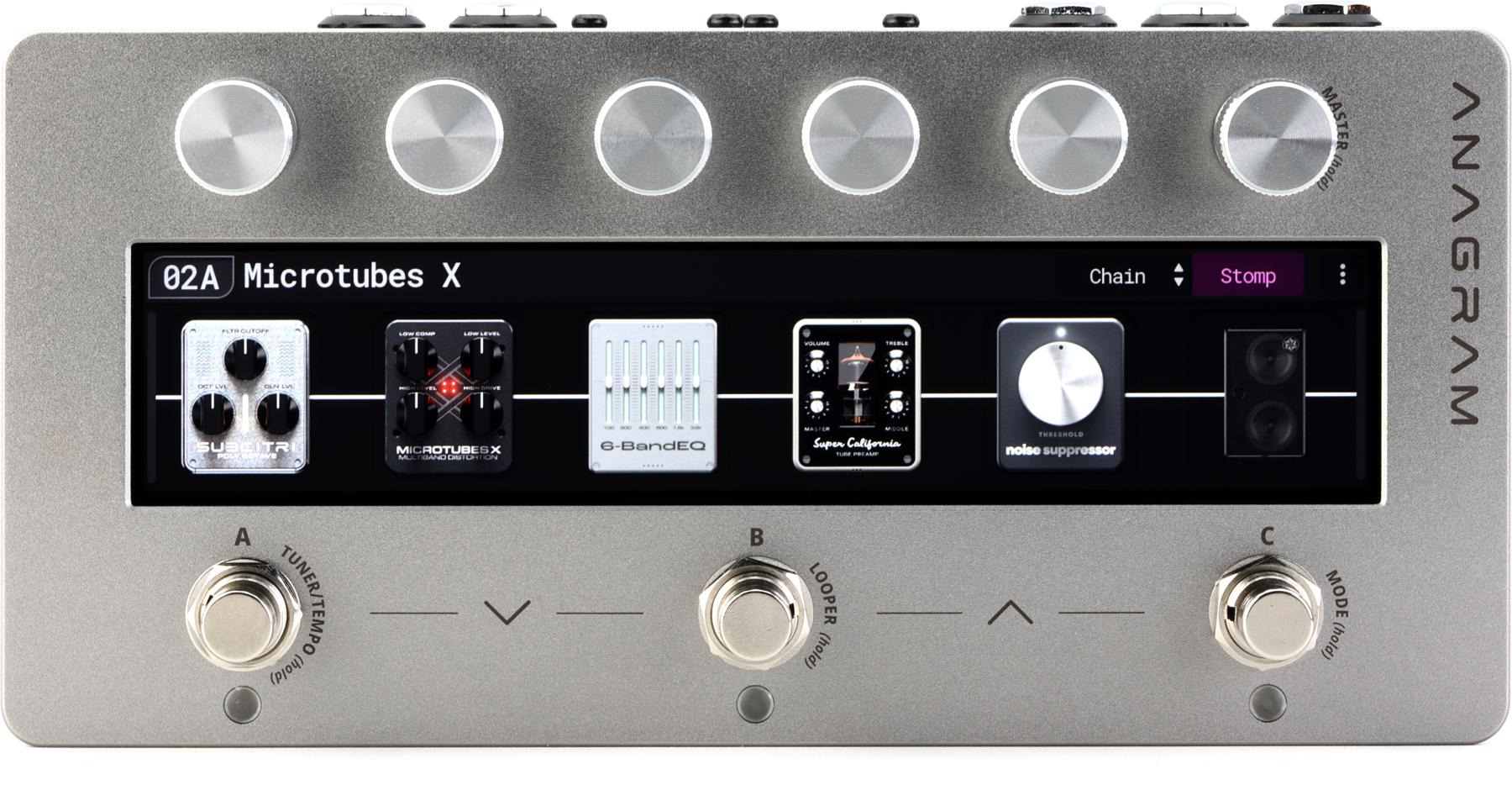The Roy is an exceedingly faithful Vox box that brings genuine tube dynamics to your pedalboard.
This is an interesting moment for amp-in-a-box pedals. It used to be novel to have a little box that approximated the tone signature of an iconic amp. Nowadays, though, modeling pedals and profilers can give you many digital emulations in one package. Nevertheless, there are still worlds of possibility in pedals that copy amp topology in discrete form—particularly when you add a real preamp tube to that mix.
That’s what Montreal builder Tubesteader did with the Roy, their entry in the Vox-Top-Boost-AC30-in-a-box race. The Roy is a 2-channel preamp and overdrive built around a 12AX7 vacuum tube—a design gambit that is relatively uncommon if not totally unique. The tube makes the Roy look much more vintage in spirit at a time when sleek, black Helixes and Fractals are overtaking stages. In some ways, it looks like an antique. It can sound like one in the best way too.
Riding the Tube
The Roy comes in a handsome brownish-red enclosure, with an unsurprising control layout. The rightmost footswitch turns the pedal on and off, and the one at left switches between the identical channels. Each channel has an output volume and gain knob; the controls on the right are assigned to the default channel, and when you tap the left footswitch, you engage the left-side control tandem. The treble and bass controls between the two volume and gain knobs are shared by the two channels, but a post-EQ master tone cut control, which rolls off additional treble frequencies, is mounted on the crown of the pedal beside the power input. The input and output jacks occupy the left and right sides, along with a 3.5 mm jack for external operation. The Roy runs at 12 volts and draws 350 mA, and the included power supply can be reconfigured easily for a range of international outlets.
Tubesteader’s literature says the pedal’s tones are generated via a high-voltage transistor in the first gain stage coupled with the 12AX7, which operates at 260 volts. That preamp tube is nested at the top of the enclosure’s face, underneath a protective metal “roll bar”. Trusty as it looks, when there is a glass element on the exterior of a pedal’s housing, there’s an element of vulnerability, and transporting and using the Roy probably requires a more conscientious approach than a standard stompbox.
Royal Tones
Compared to the Vox's own Mystic Edge, an AC30-in-a-box from Vox powered by Korg’s NuTube vacuum fluorescent display technology, the Roy feels warmer, and more dynamic, proving that the 12AX7 isn’t just there for looks. The Mystic Edge could sound positively icy compared to the Roy’s smooth, even breakup. The Roy is very happy at aggressive settings, and in my estimation, it sounds best with output volumes driving an amp hard and the pedal’s gain around 3 o’clock. That recipe sounds good with single-coil guitars, but with a P-90-loaded Les Paul Junior, it achieves roaring classic-rock greatness. I’ve always felt Voxes, rather than Marshalls, are better vehicles for dirty punk chording. The Roy did nothing to dissuade me from that belief. And the pedals' midrange punch and bark in power-chord contexts lent authority and balance that makes such chords hit extra hard.
Though the Roy creates many of its own tasty drive tones, it really comes to life when pushed by a boost or overdrive, much like a real amp. When I punched it with a Fish Circuits Model One overdrive, the Roy was smoother and less spiky than a cranked AC30, yet there was plenty of note definition, attack, and the harmonic riches you’d turn to an AC for in the first place. A JFET SuperCool Caffeine Boost also brought additional depth and color to the output and broadened the pedal’s voice.
If you’re most comfortable with a real Vox amp, the Roy is a reliable and familiar-feeling stand-in when managing a different backline amp. In at least one way, though, the Roy is, perhaps, a bit too faithful to its influence’s design: There’s a lot of treble on tap, and it’s easy to cook up tinnitus-inducing frequencies if you get too aggressive with the treble control. Noon positions on the cut/boost tone knobs sound pretty neutral. But I found it difficult to push the treble much past 2 o’clock without wincing—even with the tone cut control set at its darkest. (This quality, of course, may make the Roy a good match for squishier Fender-style designs). The relationship between the Roy’s treble and bass controls also takes time to master. The two don’t just add or boost their respective frequencies, but also add or subtract midrange, which can result in intense and sudden gain-response changes. As a general guideline, a light touch goes a long way when fine tuning these frequencies.The Verdict
The Roy isn’t exactly a bargain at $299. Then again, this Vox-in-a-box can stand in for real-deal Top Boost tones and the 2-channel design means you can move between an AC’s chimey cleans and ripping cranked sounds in a flash. If you’re squarely in the Vox amp camp, you’d be hard-pressed to find a more authentic means of achieving that range of clean-to-crunchy sounds.














![Rig Rundown: Russian Circles’ Mike Sullivan [2025]](https://www.premierguitar.com/media-library/youtube.jpg?id=62303631&width=1245&height=700&quality=70&coordinates=0%2C0%2C0%2C0)




